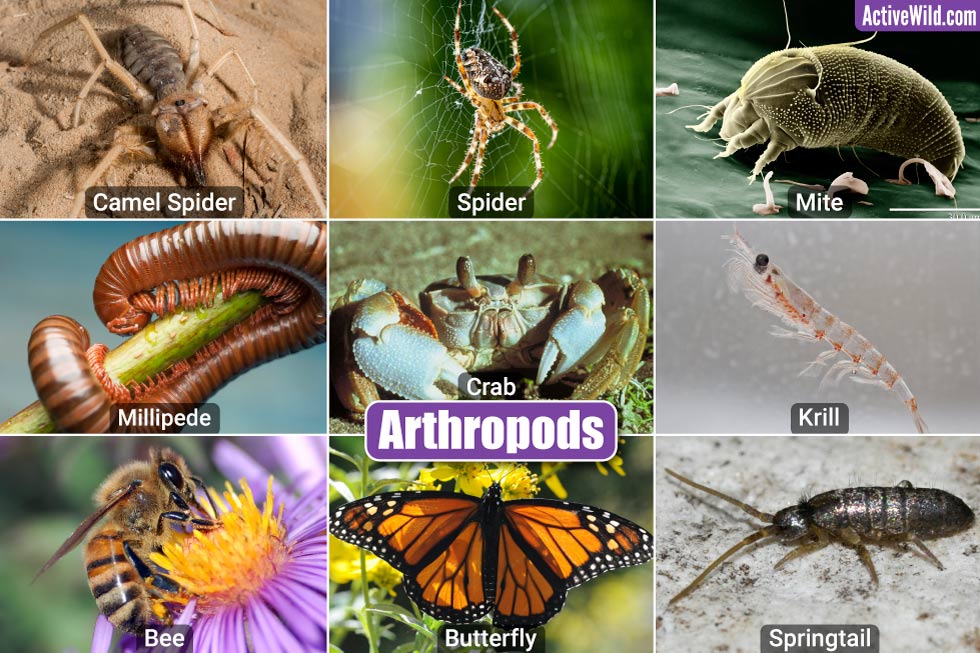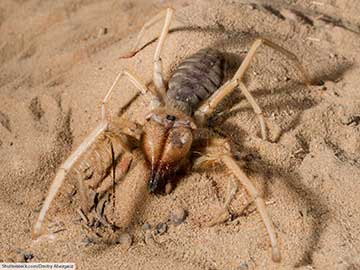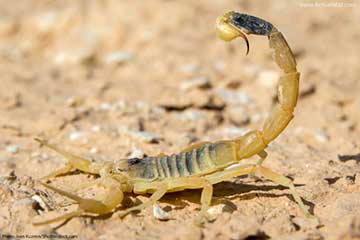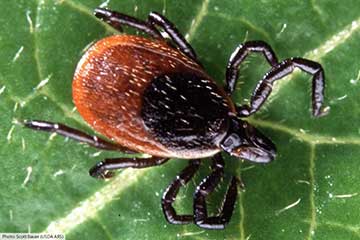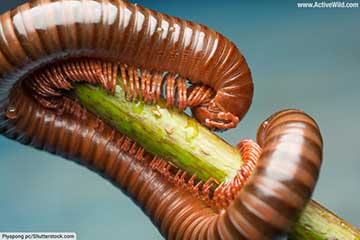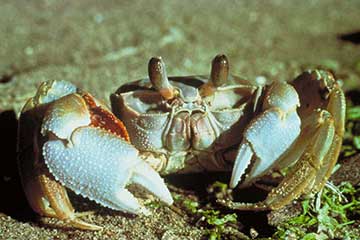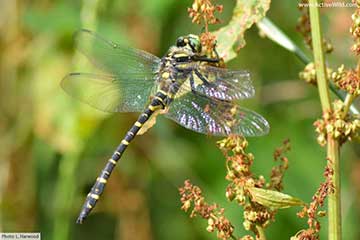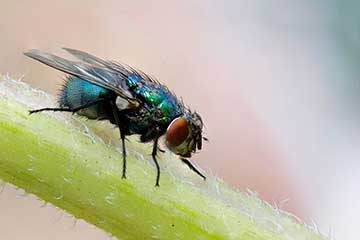Arthropods examples from major groups, including insects, crustaceans, arachnids, myriapods, and more.
Arthropods Examples
Examples of arthropods include insects such as flies, bees, beetles, and ants; crustaceans such as barnacles, crabs, lobsters and krill; myriapods such as centipedes and millipedes; arachnids such as spiders, scorpions and camel spiders, and extinct animals such as trilobites.
Below is a list examples of arthropods from major groups. Click on a group name / image for information on a particular arthropod, or continue scrolling to browse all of the animals.
Chelicerata (the arthropod group that contains the arachnids and related animals)
Myriapoda (the arthropod group that is home to millipedes and centipedes)
Pancrustacea (a large arthropod group containing crustaceans and hexapods)
Crustacea (the crustaceans - animals such as crabs, lobsters, krill, and related animals)
Hexapoda (insects and related animals)
Trilobita (trilobites are among the earliest-known arthropods, and are now extinct)
Three of the largest and best-known arthropod groups are Insecta (insects), Crustacea (crustaceans) and Arachnida (arachnids). You can find out more about these groups on the following pages:
Discover different invertebrate groups on this page: Examples of Invertebrates
Arthropods
Arthropods are invertebrate animals belonging to the phylum* Arthropoda. Arthropoda is the largest single group of living animals; over 80% of all known living animal species are arthropods.
Characteristics of arthropods include: a segmented body, jointed limbs (the word “Arthropoda” means “jointed feet”) and an exoskeleton. An arthropod has to regularly shed its exoskeleton in order to grow – a process known as molting (moulting in British English).
The segments of an arthropod’s body are divided into sections called tagmata. Arthropods such as insects have three tagmata: a head, thorax and abdomen.
* A phylum is a group into which species are categorized. A phylum is a sub-group of a kingdom (such as the animal kingdom), and itself can be divided into increasingly smaller groups such as classes, orders and families).
Chelicerata
The subphylum Chelicerata is one of the main arthropod groups. It includes arthropods such as sea spiders, horseshoe crabs, and one of the best-known of all arthropod classes: Arachnida, which is home to arachnids such as spiders, scorpions and camel spiders.
- You can find out more about arachnids on this page: Arachnids – the Ultimate Guide
Chelicerates, like all arthropods, have segmented bodies, and the body segments of chelicerates are divided into two main sections, or "tagmata": the prosoma, which includes the head and thorax, and the opisthosoma, or abdomen, which contains the heart and respiratory organs (gills for aquatic species; lungs for terrestrial species).
Chelicerates are characterized by their jaw-like mouthparts, which are known as chelicerae.
Camel Spider

- Subphylum: Chelicerata
- Class: Arachnida
- Order: Solifugae
Camel spiders are a group of arachnids that are usually found in deserts and other arid habitats.
Being arachnids, camel spiders have eight legs, along with two additional pairs of appendages on their heads: chelicerae and pedipalps.
A camel spider’s chelicerae take the form of large, fang-like mouthparts. Its pedipalps resemble legs, but are in fact antennae-like feelers.
Discover More With Active Wild
You can find out more about camel spiders on this page: Camel Spider Facts
Harvestman

- Subphylum: Chelicerata
- Class: Arachnida
- Order: Opiliones
Members of the arachnid order Opiliones are known as “harvestmen”. 6,676 species of harvestmen are currently recognized. (source) Harvestmen are found on every continent except Alaska.
Harvestmen are often mistaken for spiders due to their long legs and relatively small bodies. Unlike spiders, however, the bodies of harvestmen lack a clear “waist” separating the prosoma (combined head and middle section) from the abdomen.
Other differences between harvestmen and spiders include: legs that are usually noticeably longer and thinner than those of spiders, and the lack of both venom glands and silk glands.
Horseshoe Crab

- Subphylum: Chelicerata
- Order: Xiphosura
Despite their name, horseshoe crabs are more closely-related to arachnids than they are to crabs and other crustaceans.
There are four living species of horseshoe crab: the Atlantic horseshoe crab (also known as the American horseshoe crab, which is found on the American Atlantic coast and in the Gulf of Mexico; and three Asian species: the Indo-Pacific horseshoe crab (also known as the Indonesian, Indian or southern horseshoe crab); Chinese horseshoe crab (also known as the Japanese, or tri-spine horseshoe crab) and the Mangrove horseshoe crab.
There is very little difference between the horseshoe crabs of today and those that inhabited the world’s oceans and beaches 300 million years ago.
Discover More With Active Wild
You can find out more about the Atlantic horseshoe crab on this page: Atlantic Horseshoe Crab Facts
Mite

- Subphylum: Chelicerata
- Class: Arachnida
- Orders: Acariformes and Parasitiformes
Mites are a group of very small (many are microscopic) arachnids. The 20,000+ mite species are split between two orders: Acariformes and Parasitiformes.
Some mites are parasites, living on or in the bodies of other animals to the detriment of their hosts, while others play important roles in the ecosystem as decomposers, breaking down organic matter.
Some humans are allergic to house dust mites (or, to be exact, the droppings of house dust mites).
Scorpion
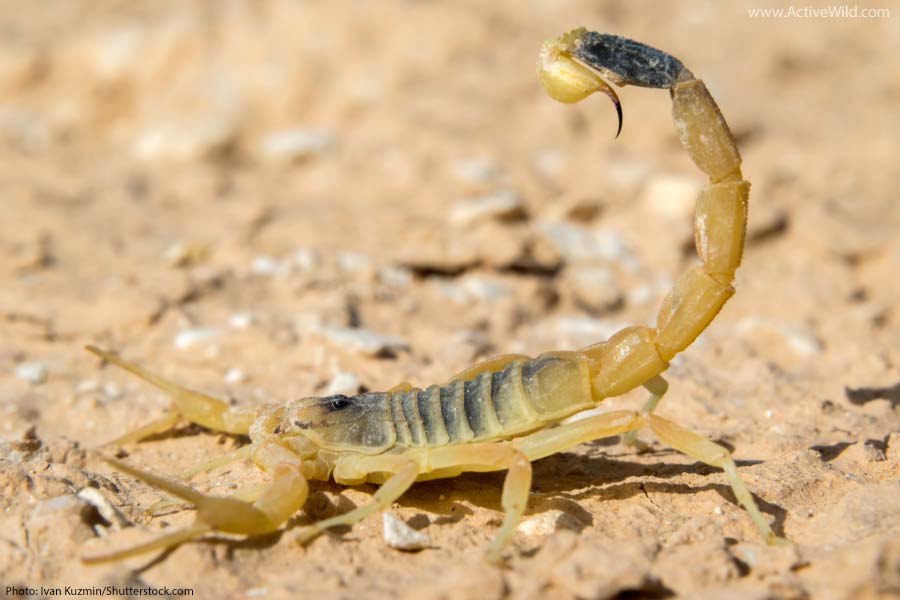
- Subphylum: Chelicerata
- Order: Scorpiones
Scorpions are arachnids in the order Scorpiones. Scorpions have eight legs, and can be differentiated from other arachnids by their pedipalps, which take the form of large pincers, and by their extended tails, which are equipped with a venomous stinger.
Out of the 2,684 currently recognized scorpion species (source), only a very small percentage are capable of inflicting a sting lethal to a healthy adult human. Even a sting from a deathstalker scorpion – one of the most dangerous scorpion species – is rarely fatal, especially if medical treatment is available.
Discover More With Active Wild
You can find out more about scorpions on this page: Scorpion Facts
You can find out more about the deathstalker scorpion on this page: Deathstalker Scorpion Facts
Sea Spider

- Subphylum: Chelicerata
- Class: Pycnogonida
- Order: Pantopoda
The 1,361 (source) species of sea spiders make up the order Pantopoda.
Sea spiders are marine arthropods found in oceans all around the world. Most are predatory bottom-dwellers that feed on invertebrates such as corals and sponges.
Sea spiders have eight long legs, and very small bodies. Most species are small, with a leg span of just a few millimeters, but some species are much larger, with leg spans of up to 70 cm.
Despite the name, sea spiders are not spiders, and in fact aren’t arachnids at all. A growing number of scientists don’t even place sea spiders in Chelicerata, believing that sea spiders branched off from other arthropods early on in the group’s existence.
Spider
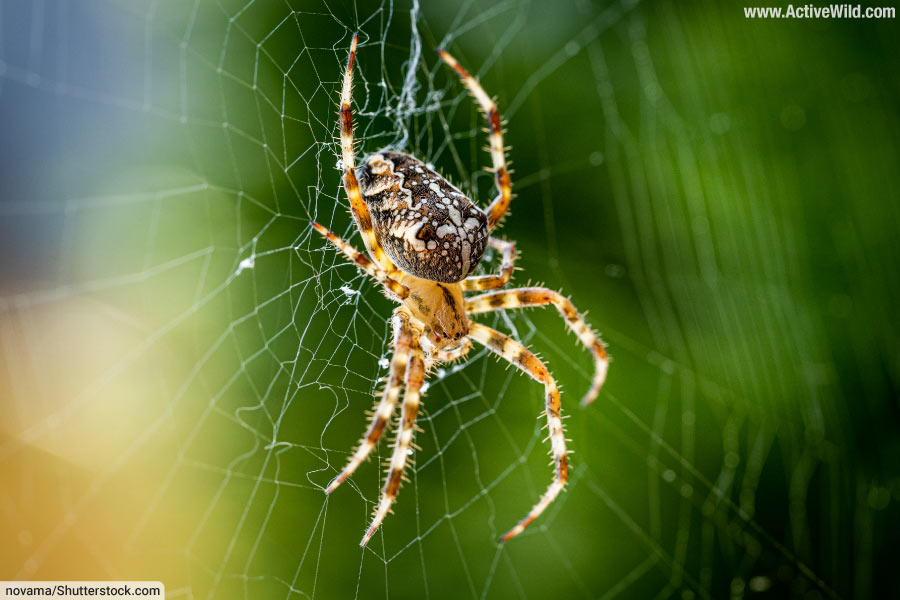
- Subphylum: Chelicerata
- Order: Araneae
Spiders are the best-known and most familiar arachnids.
There are almost 50,000 recognized spider species. Together, they make up the order Araneae. There are more spiders than any other type of arachnid, and only six orders in the entire animal kingdom contain a greater number of species than Araneae.
A spider has eight legs, and its body consists of two main parts: the cephalothorax and opisthosoma (abdomen). The chelicerae (jaws) of a spider have venomous fangs, and silk-producing spinnerets are located on a spider’s abdomen. Using their spinnerets, many spiders are able to build webs.
Spiders are found on every continent except Antarctica, which is bad news if you suffer from arachnophobia (fear of spiders).
Discover More With Active Wild
Find out more about the difference between spiders and insects: Is A Spider An Insect?
Tick

- Subphylum: Chelicerata
- Order: Ixodida
Ticks are parasitic arachnids that gain nourishment by drinking the blood of host animals. 867 tick species are listed in the Catalogue of Life. (source)
Ticks are responsible for transmitting a number of diseases, including typhus, Rocky Mountain tick fever, and Lyme disease.
Whip Scorpion / Vinegaroon

- Subphylum: Chelicerata
- Order: Thelyphonida
Whip scorpions are a group of arachnids that resemble scorpions but lack the stinging tail of their namesakes. Instead, they have a long, whip-like tail, from which they get their name. Their pedipalps are shorter and sturdier than those of scorpions.
Although whip scorpions lack the venomous sting of a scorpion, they are able to spray potential predators with a noxious chemical from glands at the base of the tail. The chemical, which smells of vinegar, gives the arachnids their alternative name of vinegaroons.
Myriapoda
The subphylum Myriapoda is an arthropod group that is home to centipedes, millipedes, and related animals. This ancient group first appears in the fossil record in the Early Devonian period, making it at least 414 million years old.
Myriapods such as the millipede-like Pneumodesmus newmani were among the first land animals. This particular fossil was discovered by Mike Newman, a bus driver and amateur paleontologist.
Centipede
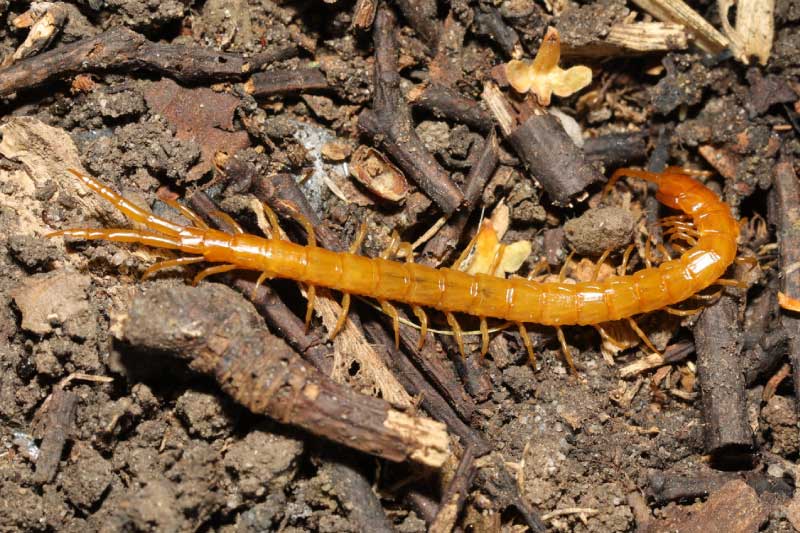
- Subphylum: Myriapoda
- Class: Chilopoda
Centipedes are predatory arthropods with long, segmented bodies. Each segment has one pair of legs (unlike those of millipedes, which have two pairs of legs).
Found on all continents except Antarctica, centipedes equipped with venomous, fang-like pincers known as forcipules. Some centipedes are capable of giving an excruciatingly painful bite.
Although the word “centipede” is derived from the Latin for one hundred feet, no centipede has exactly 100 feet; the number of pairs of feet a centipede has is always odd. Some centipedes have just 15 pairs of legs.
Discover More With Active Wild
You can find out more about centipedes on this page: Centipede Facts
Millipede
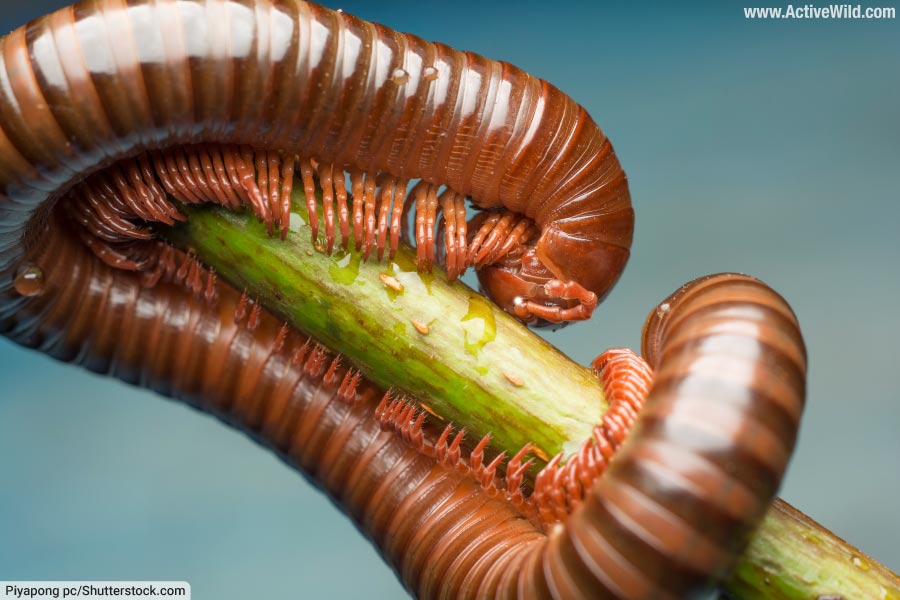
- Subphylum: Myriapoda
Unlike centipedes, millipedes are not venomous, and only a minority are predatory. Most millipedes are detrivores, feeding on decaying vegetation and other organic matter.
For self-defense, millipedes secrete noxious chemicals from their bodies, and some species are brightly-colored to advertise this fact to potential predators.
Millipedes have two pairs of legs per body segment, unlike centipedes, who have only a single pair per segment. Millipedes are usually much slower-moving than centipedes.
Although the word “millipede” means one thousand feet, the majority of millipede species have fewer than 200 legs.
The millipede with the largest number of legs is the Australian species Eumillipes Persephone. It has up to 1,306 legs; more than any other living animal.
Pancrustacea
Pancrustacea is a group of arthropods that contains all crustaceans and hexapods (including insects). Recent molecular data suggests that hexapods evolved from crustaceans, meaning that insects (which are hexapods) are more closely related to animals such as crabs than they are to myriapods such as millipedes and centipedes.
Crustacea
Crustacea is a group of arthropods that includes decapods (animals such as crabs, lobsters and crayfish), barnacles, krill, and a variety of related animals. Nearly all crustaceans live in marine habitats, but some, such as woodlice, are found on land.
A distinguishing characteristic of crustaceans is the presence of “biramous” limbs and other appendages, which branch into two.
- You can find out more about crustaceans on this page: Crustaceans - The Ultimate Guide
Barnacle
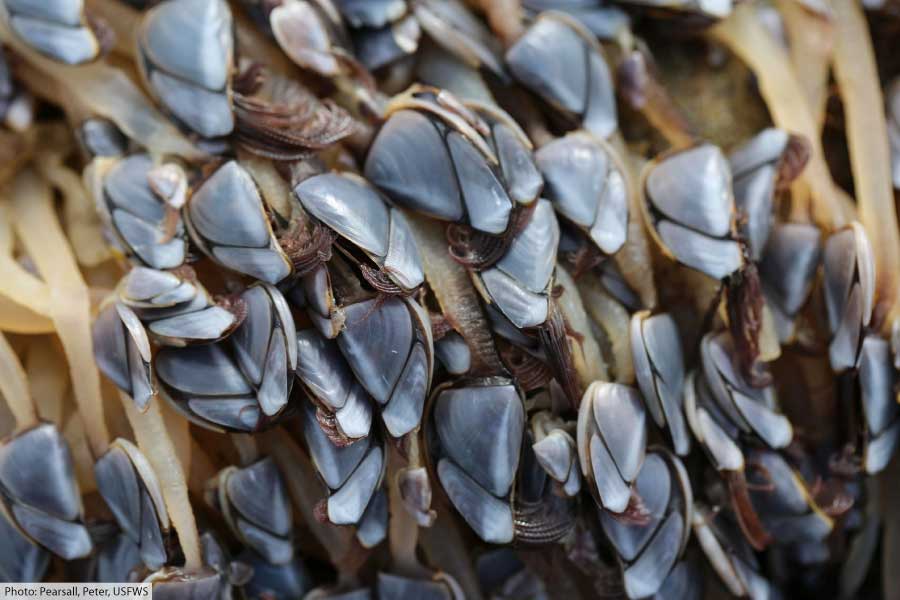
- Subphylum: Pancrustacea / Crustacea
- Class: Maxillopoda
- Subclass: Cirripedia
Barnacles are crustaceans that, after an initial larval stage, spend all their adult life attached to one surface. The cement they secrete for this purpose is the strongest-known natural glue.
There are more than 1,400 species of barnacles found in oceans worldwide. The most common type of barnacle are acorn barnacles, which are found in temperate and tropical saltwater habitats.
Barnacles are omnivores that feed with feather-like appendages called “cirri”. These filter microscopic organisms floating in the water.
Barnacles first appeared over 300 million years ago, during the Carboniferous Period of the Paleozoic Era.
Crab
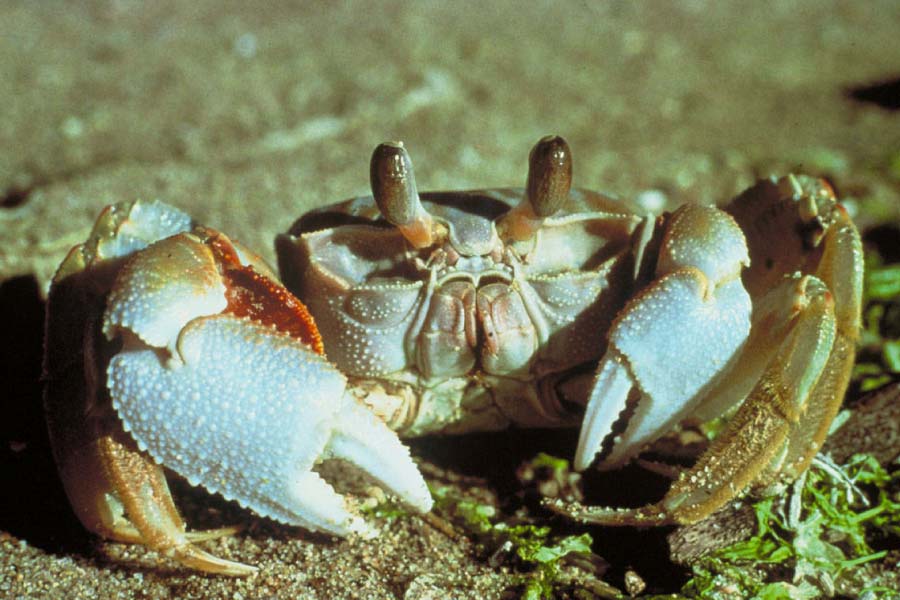
- Subphylum: Pancrustacea / Crustacea
- Order: Decapoda
- Infraorder: Brachyura
There are almost 8,000 known living crab species. Although most are found in marine habitats, there are around 1,300 species of freshwater crabs. Crabs are found in all of the world’s oceans.
Crabs belong to the order Decapoda along with lobsters, crayfish, shrimp and prawns. Like other decapods, crabs have ten legs (although the front pair of legs of many decapods, including crabs, are actually pincers).
Krill
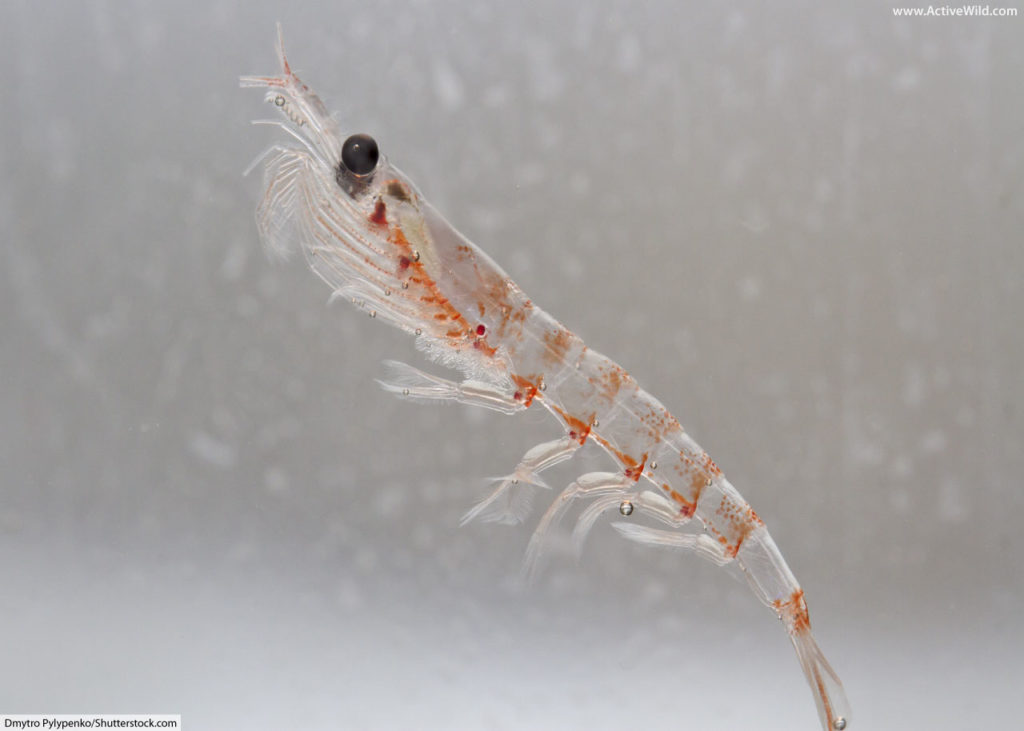
- Subphylum: Pancrustacea / Crustacea
- Order: Euphausiacea
Although small as individuals, krill have vast populations and, existing near the bottom of the food chain, play a vital role in many marine ecosystems.
The Antarctic krill, which has a body length of around 6 cm / 2.4 in., has the greatest combined biomass – an estimated 400,000,000 tonnes – of all animals. The species’ total population is thought to consist of over 700 trillion individuals!
Discover More With Active Wild
You can find out more about the Antarctic krill on this page: Antarctic Krill Facts
Lobster

- Subphylum: Pancrustacea / Crustacea
- Order: Decapoda
- Family: Nephropidae
Lobsters are large marine crustaceans found in oceans worldwide.
Like all crustaceans, lobsters have segmented bodies that are protected by a hard exoskeleton. Along with crabs, crayfish, and related animals, lobsters belong to the group of crustaceans known as “decapods”, on behalf of their ten legs.
Each of a lobster’s front three pairs of legs have claws; those on the first pair are much larger than the others.
The American lobster, Homarus americanus, can weigh over 20 kg / 44.09 lb, making it not only the world’s heaviest crustacean, but also the heaviest arthropod.
Woodlouse

- Subphylum: Pancrustacea / Crustacea
- Order: Isopoda
Not all crustaceans are marine, or even aquatic animals; most woodlice are terrestrial (land-living).
There are almost 4,000 recognized Woodlice species (the Catalogue of Life lists 3,878 species) (source)
Many woodlice are able roll up into a ball if threatened, a behavior known as “volvation”. Because of the animals’ resemblance to a pill when in this posture, woodlice are often known as “pill bugs”.
Hexapoda
By far the largest arthropod group is Hexapoda, and by far the largest group of hexapods is Insecta, which is home to the world’s insects.
There are around one million known insects, and insects account for around half of all known living organisms.
The word “hexapod” means “six feet”, and, as the name suggests, one of the characteristics of hexapods is their six legs. A hexapod’s body is divided into three main sections: head, thorax and abdomen.
Today, many scientists consider Hexapoda to be part of Crustacea, with molecular data suggesting that hexapods evolved from crustaceans.
Insects were the first animals able to fly (insects were flying for millions of years before the next flying animals – the Pterosaurs – appeared). Insects remain the only arthropods able to fly.
Together, Hexapoda and Crustacea form the larger group, Pancrustacea.
You can find out more about insects on this page: Insects - The Ultimate Guide
Ant
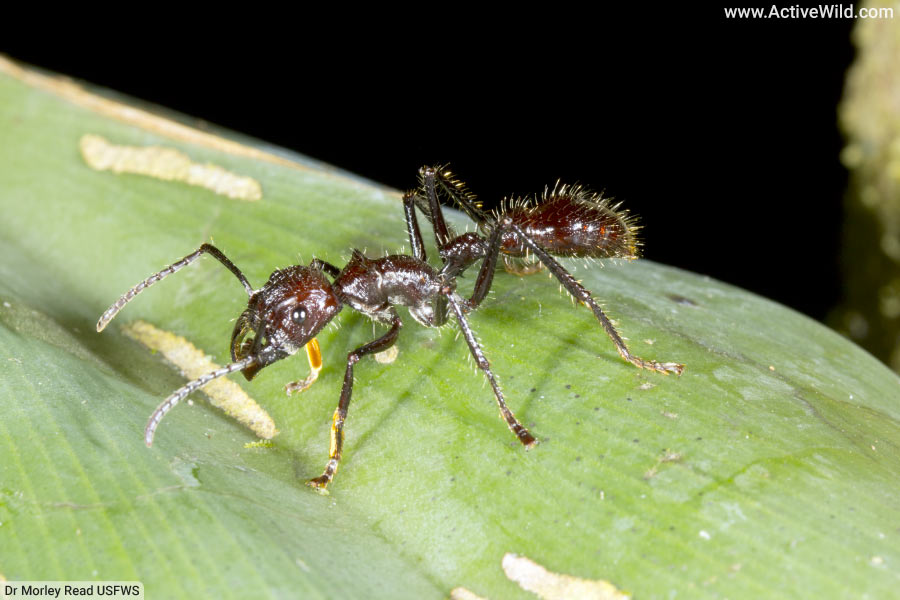
- Subphylum: Pancrustacea / Hexapoda
- Class: Insecta
- Order: Hymenoptera
- Family: Formicidae
Ants are a family, Formicidae, of insects, which is part of a larger insect group, the order Hymenoptera, which is also home to bees and wasps.
Ants are small, colonial insects. A single ant colony can contain over one million ants. The majority of the ants in a colony are female workers, which perform a number of roles, including collecting food and tending to the colony’s young. Male ants, known as drones, mate with queens, which are the only female ants in a colony produce young.
Ants inhabit a wide range of habitats, including grasslands, forests, deserts, swamps, and cities; everywhere, in fact, except the coldest and highest extremes of our planet.
Discover More With Active Wild
- Find out how many ants there are in the world on this page: How Many Ants Are In The World?
- You can find out more about bullet ants on this page: Bullet Ant Facts
- Discover more about leafcutter ants ons this page: Leafcutter Ant Facts
Bee
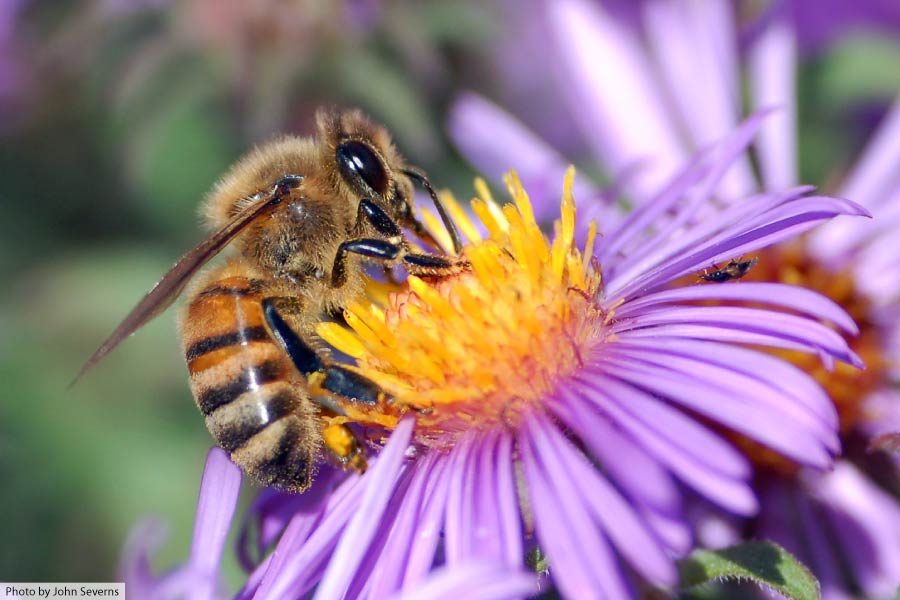
- Subphylum: Pancrustacea / Hexapoda
- Class: Insecta
- Order: Hymenoptera
Bees are a large group of winged insects that includes honey bees, bumble bees, stingless bees, and several other related groups. The closest relations of bees are wasps and ants; all three groups belong to the suborder Apocrita.
Bees are found on all continents except Antarctica, and play an incredibly important role in their ecosystems. Bees act as pollinators, moving pollen from one flower to the next and being rewarded for their work with nectar. In doing so, bees help flowering plants to reproduce, ensuring that there is always plant food at the bottom of the food chain.
Discover More With Active Wild
You can find out more about honey bees on this page: Honey Bee Facts
Beetle
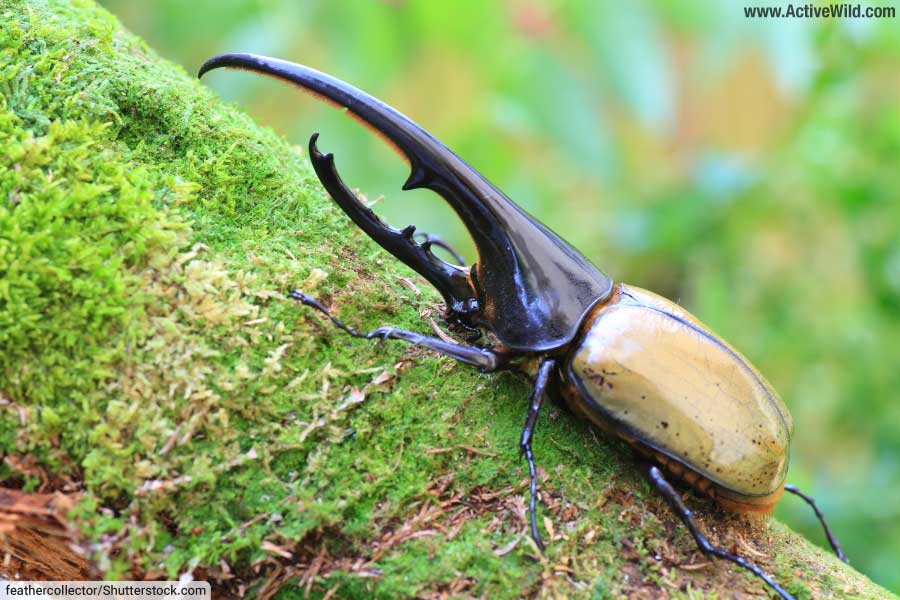
- Subphylum: Pancrustacea / Hexapoda
- Class: Insecta
- Order: Coleoptera
Beetles are insects in the order Coleoptera. With around 400,000 recognized species, Coleoptera is the largest animal order. Beetles make up around 25% of all known animal species!
The forewings of beetles have adapted to form hardened wing cases known as elytra. These provide protection when the beetle is crawling through terrain that might damage the exposed wings of other types of insects. This allows beetles to live in a wide range of habitats.
Familiar types of beetles include: fireflies, dung beetles, glowworms, ladybugs / ladybirds, Hercules beetles, tiger beetles and weevils.
Discover More With Active Wild
You can find out more about beetles on this page: Beetles – The Ultimate Guide
Butterfly
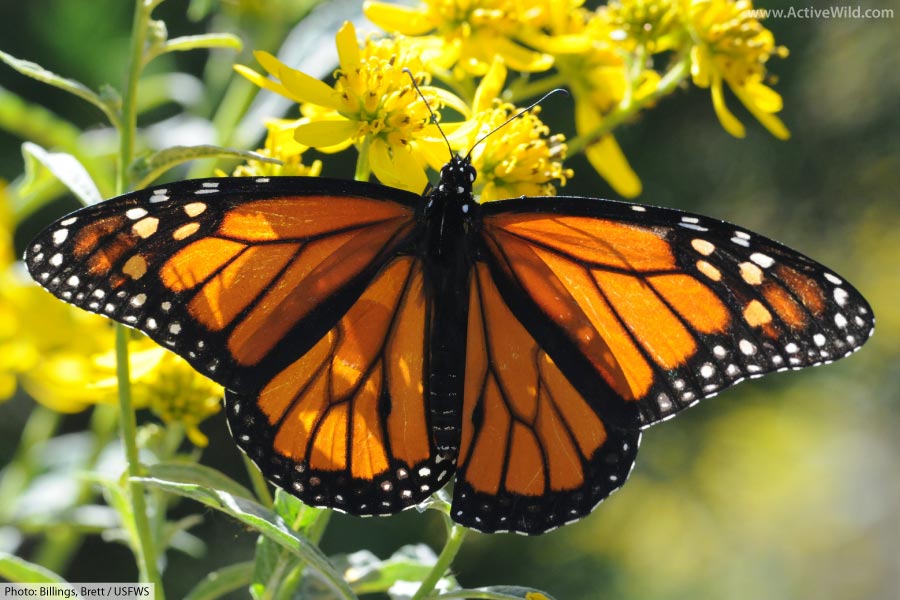
- Subphylum: Pancrustacea / Hexapoda
- Class: Insecta
Butterflies are insects belonging to the order Lepidoptera, which is also home to moths (in fact, butterflies evolved from moths).
Lepidoptera means ‘scale wing’. The name refers to the many tiny scales which cover both the wings and the bodies of butterflies and moths.
Butterflies are characterized by their large, often brightly-colored wings. They have a four-stage life cycle, starting with an egg, hatching into a larva (known as a caterpillar), turning into a pupa, then emerging as an imago (the winged, adult stage).
The world’s largest butterfly is the Queen Alexandra’s birdwing butterfly. Some butterflies, notably the monarch butterfly, migrate thousands of miles.
Discover More With Active Wild
You can find out the difference between butterflies and moths on this page: What is the difference between a moth and a butterfly?
Dragonfly

- Subphylum: Pancrustacea / Hexapoda
- Class: Insecta
- Order: Odonata
- Infraorder: Anisoptera
Dragonflies are large insects found in freshwater habitats in many parts of the world.
Together, the 3,000 or so species of dragonfly together make up the sub-order Anisoptera, which is part of the insect order Odonata.
A dragonfly spends most of its life underwater in its larval stage, which, in some species, can last up to five years. The larva – known as a nymph or naiad – climbs out of the water in order to metamorphosize into its adult form.
Depending on species, adult dragonflies live for between a few days to around 10 weeks.
Dragonflies are voracious predators in both their larval and adult forms. Dragonfly larvae prey on tadpoles and even small fish, while adult dragonflies hunt on the wing, grabbing smaller insects in mid-air and carrying them to a perch to eat.
Adult dragonflies are powerful fliers, capable of sudden direction changes, hovering, and even flying backwards.
Fly

- Subphylum: Pancrustacea / Hexapoda
- Class: Insecta
- Order: Diptera
Flies are insects in the order Diptera. In terms of number of species, Diptera is the second largest insect order, after Coleoptera (the beetles).
Around 160,000 fly species are currently named, but it is estimated that there are around 1,000,000 (one million) fly species in total.
Flies have only a single pair of wings. Their hindwings have developed into organs called halteres that provide balance and help to control flight.
Flies undergo complete metamorphosis, having a four-stage life cycle: egg, larva, pupa, imago (the winged, adult stage). The larvae of many fly species are known as “maggots”.
Grasshopper
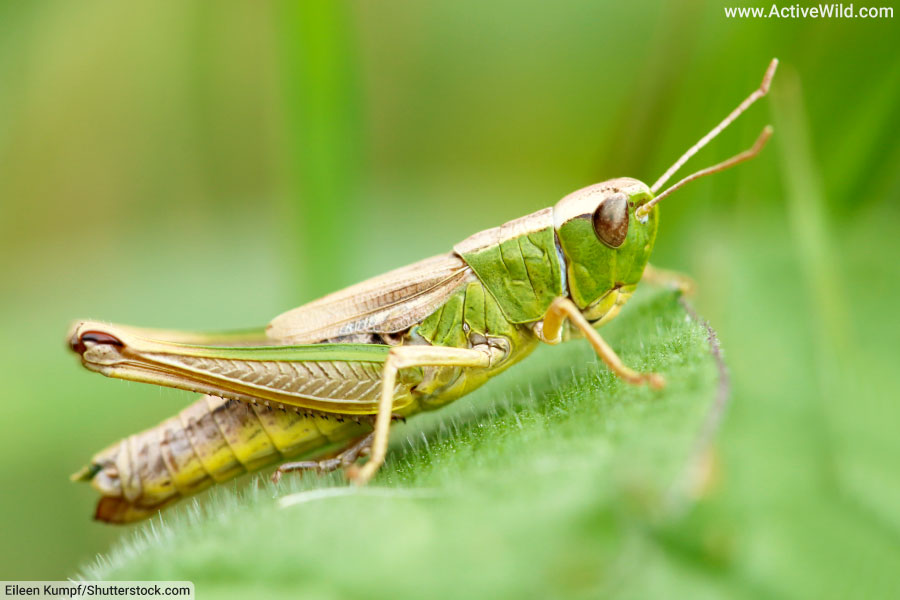
- Subphylum: Pancrustacea / Hexapoda
- Class: Insecta
- Order: Orthropoda
- Suborder: Caelifera
Grasshoppers are jumping insects belonging to the suborder Caelifera. There are around 11,000 known grasshopper species and likely many more still to be discovered.
Grasshoppers occur in a wide variety of habitats and are found on all continents except Antarctica. They occur in the largest numbers in tropical areas. All known species are herbivorous.
The largest species of grasshopper is the “hedge grasshopper”, an Australian species that can reach a length of 9 cm / 3.5 in.
Most grasshopper species can jump 20 times their length and 10 times their height.
Springtail
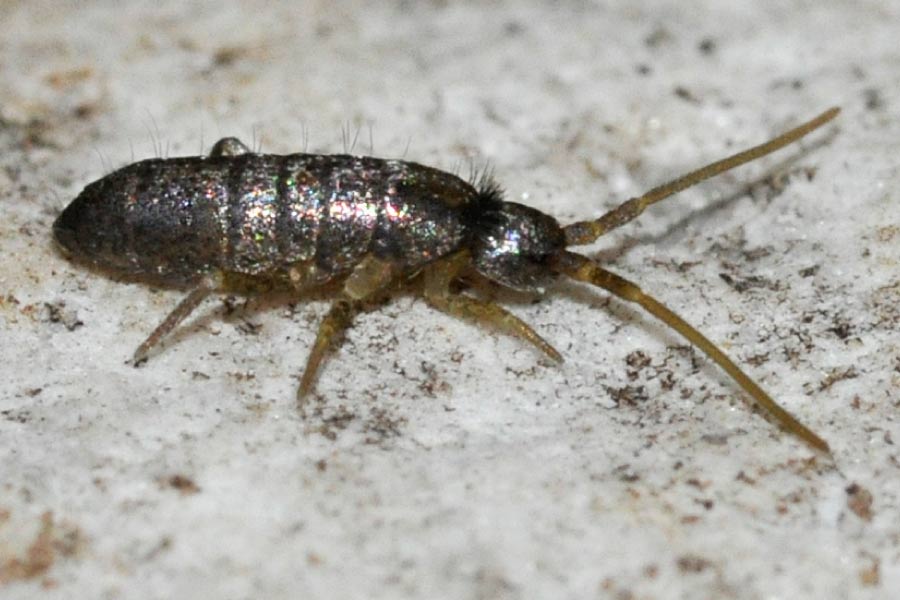
- Subphylum: Pancrustacea / Hexapoda
- Subclass: Collembola
Not all hexapods are insects, springtails being an example of hexapods outside of the class Insecta. The almost 9,000 known species of springtail.
Springtails get their name from a forked, tail-like appendage, known as a furcula, that is usually held folded under the body. When this is released, the springtail is hurled into the air. This mechanism is used for predator evasion and travel.
Springtails lack wings and are found in moist habitats with plenty of decaying organic matter, such as in leaf litter in forests and woodlands.
Wasp

- Subphylum: Pancrustacea / Hexapoda
- Class: Insecta
- Suborder: Apocrita
Wasps are winged insects in the same group (the suborder Apocrita) as bees and ants.
Among the most familiar wasps are those of family Vespidae, which typically have yellow / black striped abdomens and are known as “yellowjackets”. (The bright coloration warns potential predators that the insects are able to sting.)
The members of Vespidae are eusocial, living in colonies established by queens and inhabited mainly by female workers. The majority of wasp species, however, are solitary.
Trilobita

Trilobite
Trilobites are a group of extinct marine arthropods that first appeared around 521 mya (million years ago), during the Cambrian Period of the Paleozoic Era.
Trilobites were some of the very first arthropods, and were among the most successful early multicellular animals. They inhabited Earth for over 250 million years (that’s many millions of years longer dinosaurs).
During this time, trilobites evolved a great variety of body shapes and sizes, spread around the world, and adapted to a wide range of marine habitats.
Around 250 mya, at the end of the Permian period, the last of the trilobites became extinct.
Discover More With Active Wild
You can find out more about trilobites on this page: Trilobite Facts

